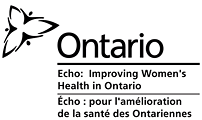To generate the POWER Report, we used “indicators,” measures that reflect the health of a population or the performance of health care processes and outcomes. An indicator of the health of Canadians might be the average life expectancy of the population, or the percentage of the population who are smokers. To evaluate equity among women, we could measure what percentage of low-income versus higher-income women are receiving regular Pap tests. To assess quality of care, we might look at how many women are receiving recommended medications after having a heart attack.
We sought to identify indicators which would be most useful to the broadest number of stakeholders. We wanted to ensure that the indicators would:
- be amenable to intervention and improvement by those in the public health, health care, and non-health sectors;
- allow for comparison between and among different subgroups of women by socioeconomic status, ethnicity, and geography;
- measure performance across the continuum of care in Ontario, from population health to primary care to tertiary care.
Selection of the indicators used for the Report was guided by the POWER Study Indicator Selection Criteria and undertaken through a rigorous selection process with input and agreement from experts in the field. For more information on this process, please see our Introduction and Framework chapters.
Below is the original list of indicators selected by the working groups and technical expert panels; actual indicators presented in the chapter may vary slightly from these lists due to modifications required during data analysis.


